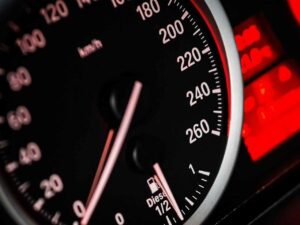
Industrial central vacuum systems Sistem Air Pro
Sistem Air Pro designs and builds modular central vacuum systems capable of deep cleaning workplaces.

Despite people's common belief, exhaust gases are not the only cause of air pollution. In fact, according to several studies, up to 55% of road traffic pollution is produced by non-exhaust particles, and around 20% of this pollution comes from brake dust, which is composed of iron particles and is caused by the friction between the iron brake rotor and the brake pads when the vehicle slows down. This dust then rises and disperses into the air and, if inhaled, triggers an inflammation of the lung cells.
In garages, brake dust poses a serious health risk to employees, especially if it is not removed correctly and consistently.
Work in a garage can also involve risks such as direct or indirect contact with toxic chemicals or the inhalation of fumes such as petrol vapours or exhaust gases or fine dust from daily work processes.
For this reason, it is necessary to ensure that there is a constant exchange of air in every garage and that the rooms and closed spaces are properly ventilated. Not only that, but it is also necessary to have an adequate vacuum system that allows the operators to work in a safe environment with the lowest possible levels of fine dust.
The dust generated by brakes is therefore toxic, and laden with metal particles, due to the material from which modern brakes are made.
The high number of cars on the road in particular means that brake dust pollution could contribute to the high number of respiratory tract infections and cases of wheezing 'city throat' that are routinely reported by people living and working in urban areas. And even more so in garages.
In order to reduce dust exposure in garages, it is therefore necessary both to use PPE (mask, gloves, goggles, overalls) and to avoid cleaning by blowing with compressed air. In this case, it is much better to use an industrial vacuum cleaner.


The dust generated by brakes is therefore toxic, and laden with metal particles, due to the material from which modern brakes are made.
The high number of cars on the road in particular means that brake dust pollution could contribute to the high number of respiratory tract infections and cases of wheezing 'city throat' that are routinely reported by people living and working in urban areas. And even more so in garages.
In order to reduce dust exposure in garages, it is therefore necessary both to use PPE (mask, gloves, goggles, overalls) and to avoid cleaning by blowing with compressed air. In this case, it is much better to use an industrial vacuum cleaner.

Ultimately, localised vacuum systems are also needed to reduce exposure to welding gases and fumes. In this respect, the Sistem Air Pro central vacuum system is a first-class solution for garage owners, as it allows targeted cleaning operations to be carried out over large areas, thanks to a flexible hose that can be extended in various sizes.
The Roll Flex motorised winder has 20 metres of hose to reach anywhere, with a motor that allows both unwinding and rewinding without the need for return springs, and wall-mounted installation that avoids possible obstructions.
Furthermore, if the industrial plant is combined with a cyclonic separator, it will be possible to intercept over 98% of the dust sucked in and preserve the filter, cycles and maintenance costs.

Sistem Air Pro designs and builds modular central vacuum systems capable of deep cleaning workplaces.

Nonostante i capannoni siano “solitamente” spazi semplici da gestire, la loro pulizia spesso risulta essere più complicata del previsto.

The reopenings and the return to normal life have revived consumption, but with such a demand that the production system cannot reorganise itself.

Whether in the food, manufacturing or automotive industries, to name but a few, suction of liquids is notoriously an obstacle.

The Circular Economy Report 2021 estimates annual savings of around €100 billion for Italian industries if circular economy management practices were adopted.

The importance of hygiene and air exchange in garages
Sistem Air Pro is capable of responding to all professional and industrial sector requests